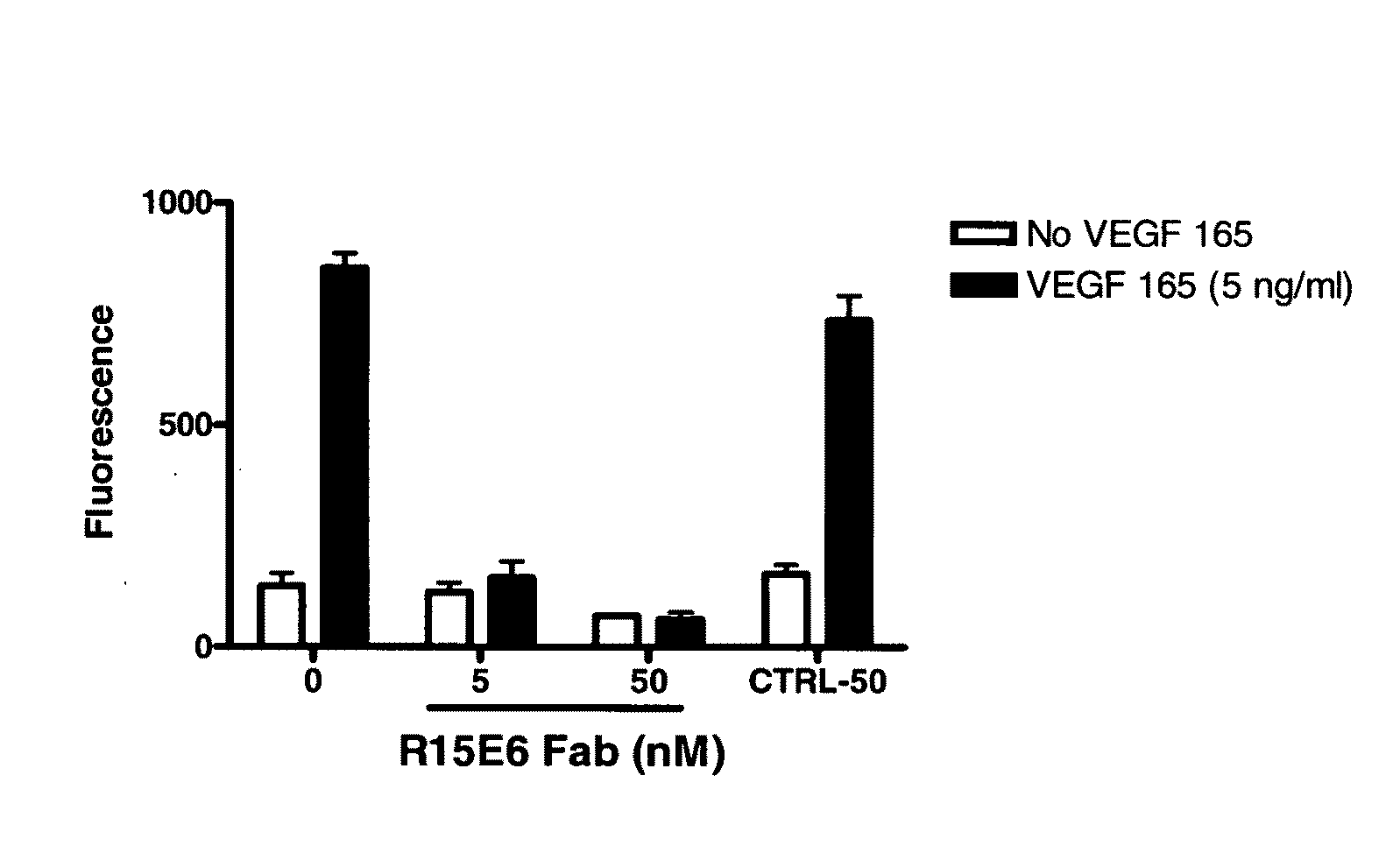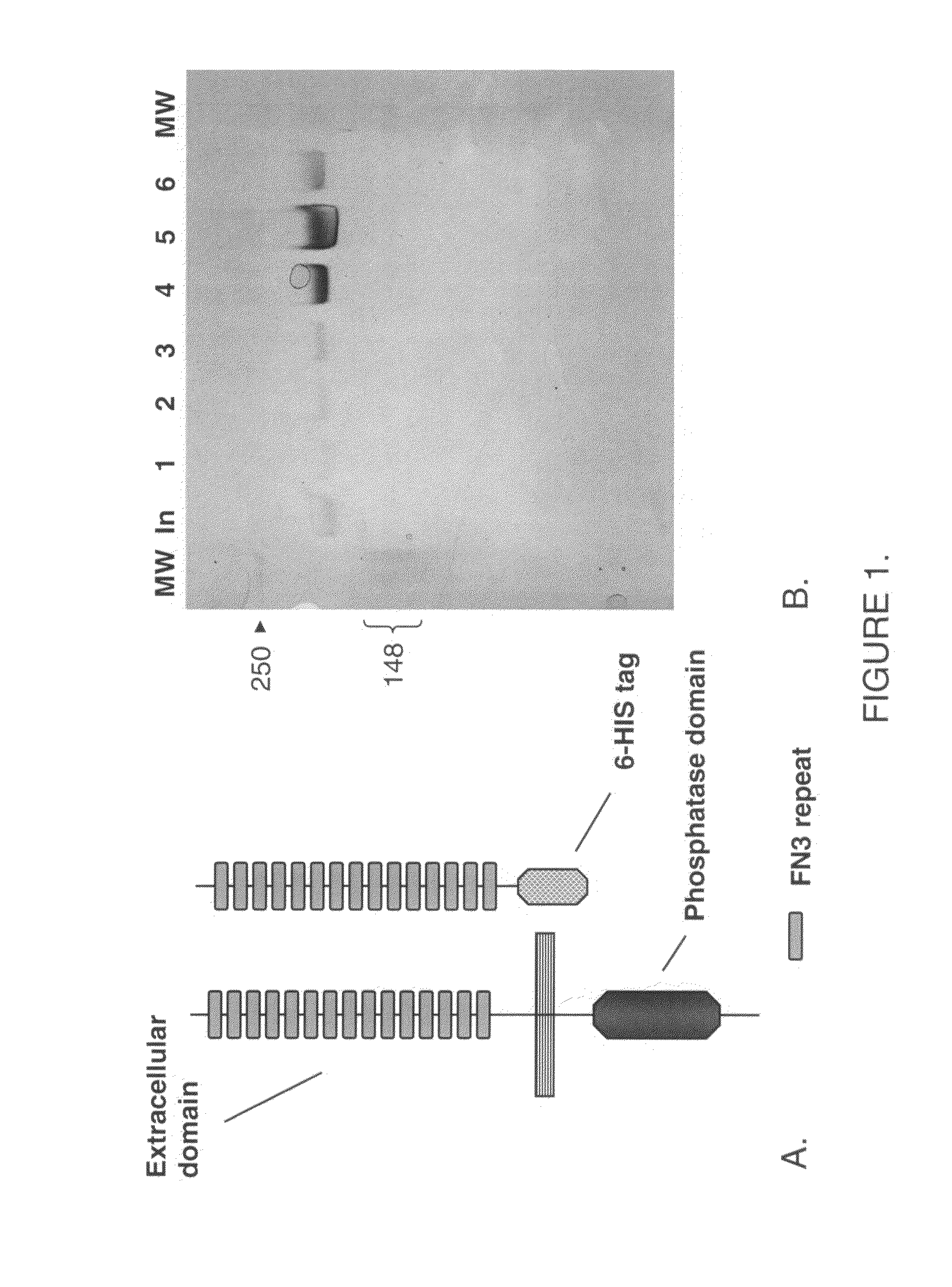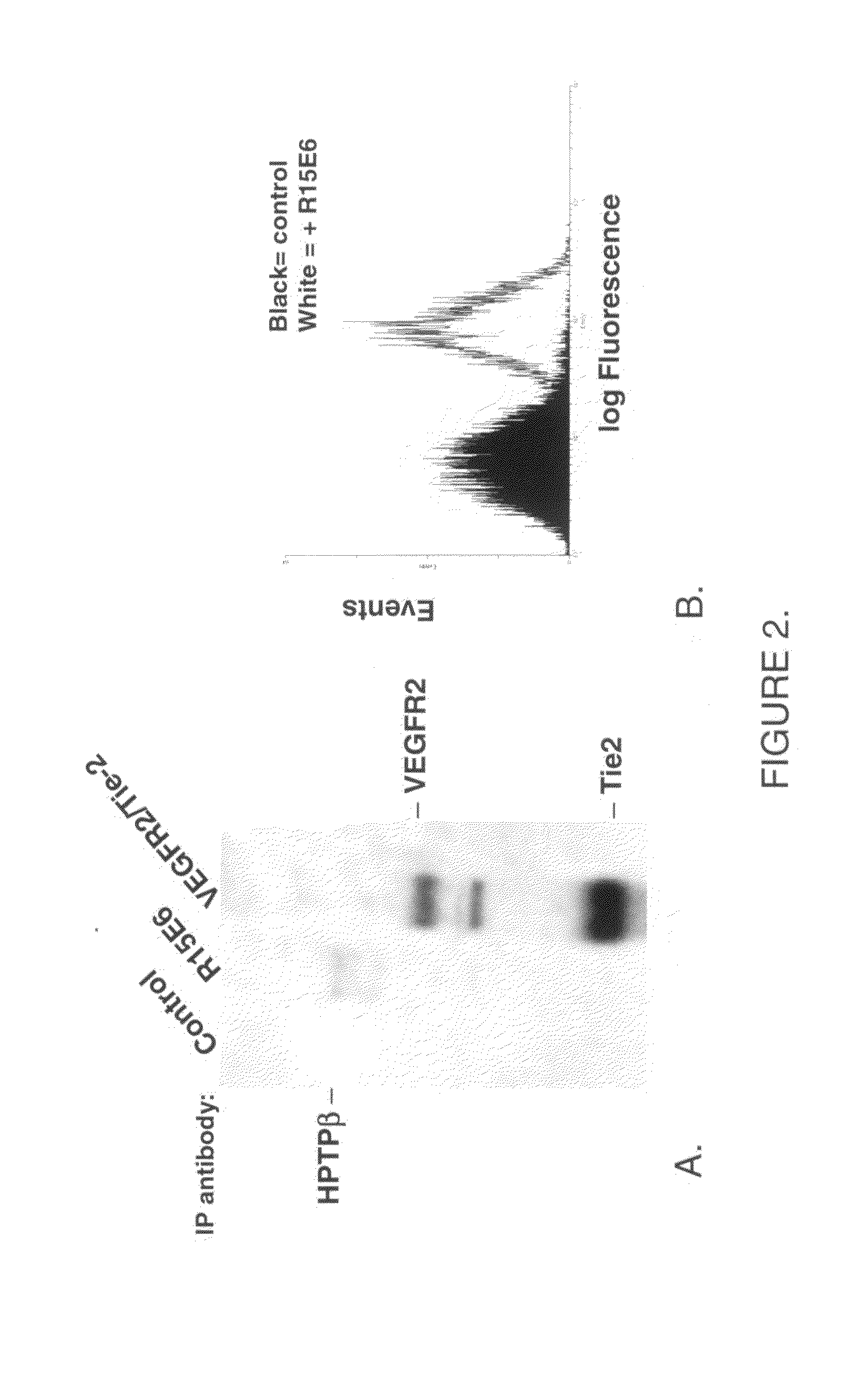Antibodies that bind human protein tyrosine phosphatase beta (HPTPbeta) and uses thereof
a technology of tyrosine phosphatase beta and antibody, which is applied in the field of antibodies and antigen binding fragments, can solve the problems of exacerbated pathological conditions, bleeding and blindness, and the molecular mechanisms that drive this process are still not fully understood
- Summary
- Abstract
- Description
- Claims
- Application Information
AI Technical Summary
Benefits of technology
Problems solved by technology
Method used
Image
Examples
example 1
Production of the HPTPβ Extracellular Domain Protein
[0122]Methods: Full length HPTPβ is cloned from a human placental library according to the manufacturer's (Origene) instructions. The clone is identical to a previously reported cDNA clone (Genbank accession #X54131) except it is missing FNIII repeat #5. A cDNA encoding the entire soluble extracellular domain (ECD) of HPTPβ is cloned by PCR from the full length cDNA (see sequence below) coding for AA 1-1534 with an added c-terminal His-His-His-His-His-His-Gly (6His-Gly) (SEQ ID NO: 1). The resulting cDNA is cloned into mammalian expression vectors for transient (pShuttle-CMV) or stable (pcDNA3.1(−))expression in HEK293 cells. To obtain purified HPTPβ ECD (βECD), HEK293 cells transfected with a βECD expression vector are incubated in OptiMEM-serum free (Gibco) for 24 hours under normal growth conditions. The conditioned media is then recovered, centrifuged to remove debris (1000 rpm×5 minutes), and 1 mL of washed Ni-NTA agarose (Qia...
example 2
Generation of Monoclonal Antibodies to HPTPβ Extracellular Domain
[0124]Methods: For production of the HPTPβ extracellular domain immunogen, the purified HPTPβ extracellular domain-6His protein is conjugated to porcine thyroglobulin (Sigma) using EDC coupling chemistry (Hockfield, S. et al, (1993) Cold Spring Habor Laboratory Press. Volume 1 pp. 111-201, Immunocytochemistry). The resulting HPTPβ extracellular domain-thyroglobulin conjugate is dialyzed against PBS, pH 7.4. Adult Balb / c mice are then immunized subcutaneously with the conjugate (100-200 μg) and complete Freund's adjuvant in a 1:1 mixture. After 2-3 weeks, the mice are injected intraperitoneally or subcutaneously with incomplete Freund's adjuvant and the conjugate in a 1:1 mixture. The injection is repeated at 4-6 weeks. Sera are collected from mice 7 days post-third-injection and assayed for immunoreactivity to HPTPβ extracellular domain antigen by ELISA and western blotting. Mice that display a good response to the ant...
example 3
R15E6 Binds to Endogenous HPTPβ on Human Endothelial Cells
[0128]A. R15E6 binds endogenous HPTPβ as demonstrated by immunoprecipitation and western blot.
[0129]Materials: Human umbilical vein endothelial cells (HUVECs), EGM media, and trypsin neutralizing solution from Cambrex; OPTIMEM I (Gibco), bovine serum albumin (BSA; Santa Cruz), phosphate buffered saline (PBS; Gibco), Growth Factors including Angiopoietin 1 (Ang1), vascular endothelial growth factor (VEGF) and fibroblast growth factor (FGF) (R&D Systems), Tie2 monoclonal antibody (Duke University / P&GP), VEGF receptor 2 (VEGFR2) polyclonal antibody (Whitaker et. al), protein A / G agarose (Santa Cruz), Tris-Glycine pre-cast gel electrophoresis / transfer system (6-8%) (Invitrogen), PVDF membranes (Invitrogen), lysis buffer (20 mm Tris-HCl, 137 mm NaCl, 10% glycerol, 1% triton-X-100, 2 mM EDTA, 1 mM NaOV, 1 mM NaF, 1 mM PMSF, 1 μg / ml leupeptin, 1 μg / ml pepstatin).
[0130]Method: HUVECs are pre-treated for 30 min with antibody (in OPTIM...
PUM
| Property | Measurement | Unit |
|---|---|---|
| Biological properties | aaaaa | aaaaa |
Abstract
Description
Claims
Application Information
 Login to View More
Login to View More - R&D
- Intellectual Property
- Life Sciences
- Materials
- Tech Scout
- Unparalleled Data Quality
- Higher Quality Content
- 60% Fewer Hallucinations
Browse by: Latest US Patents, China's latest patents, Technical Efficacy Thesaurus, Application Domain, Technology Topic, Popular Technical Reports.
© 2025 PatSnap. All rights reserved.Legal|Privacy policy|Modern Slavery Act Transparency Statement|Sitemap|About US| Contact US: help@patsnap.com



